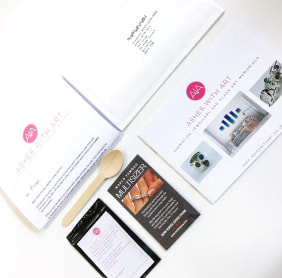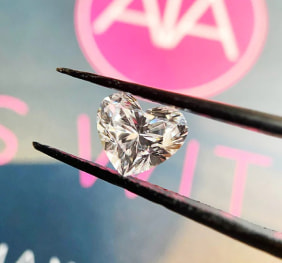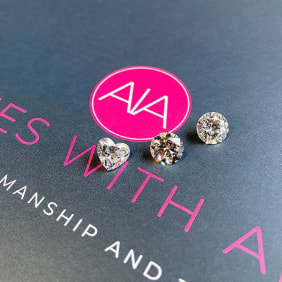Best Materials for Ashes Jewellery: Resin, Glass, or Metal?
- ✓ Resin is budget-friendly but degrades with UV/water — better for keepsakes than daily-wear jewellery.
- ✓ Glass suspends ashes safely; lots of colours; great for pendants, charms, rings.
- ✓ Metal hidden-chamber jewellery seals ashes permanently for daily, heirloom-grade wear.
You might be surprised to learn just how diverse the ashes jewellery sector really is. With so many options available, it can be utterly overwhelming, and you might struggle to make a decision about the type of jewellery you want.
Perhaps the most important factor to consider would be the material, as this will determine the style of the piece and also the longevity. There are three main types of memorial jewellery: resin, glass and metal. There are naturally pros and cons to each one, so you need to think carefully about which one is right for your needs.
Some materials are far better for keepsakes than for jewellery, since you might wear the jewellery every day. The last thing you want is for your precious memorial jewellery to break down and release the ashes.
To help you to better understand the options available, we’re taking a deep dive into memorial jewellery materials, including the styles and customisation options.
Resin memorial jewellery explained
Resin is a type of plastic material that is made by mixing together two viscous liquid materials which then go through a process called polymerization. This causes the material to harden and become a polymer.
It’s a popular choice for memorial jewellery as it can be shaped in a mould and the clear polymer allows you to suspend different materials within the plastic. This could include cremation ashes, small keepsakes or even hair. It’s a popular choice for pet memorials such as horse hair keepsakes, as it can display the hair in a beautiful way.
In general, resin isn’t recommended for jewellery, as it isn’t very long-lasting if you would like to wear it every day. A resin pendant will react to UV light and water, breaking down slowly over time. This can release the materials held within.
While resin might not be a great choice for jewellery, it can make beautiful memorial keepsakes like pebbles and ornaments. These are less likely to face extensive wear and tear.
Benefits of resin memorials
- Allows you to suspend ashes or hair within clear plastic, alongside decorative elements like flowers or glitter.
- Perfect for ornaments and decorative items.
- A cost-effective option that will be much cheaper than precious metals or glass gemstones.
Downsides of resin memorials
- Resin doesn’t last quite as long as other materials, so there is a risk it could suffer wear and tear over time.
- There are limits on the size of the memorial, due to the heat produced from the polymerization process.
Glass memorial jewellery explained
Memorial ashes can be transformed into beautiful glass gemstones, which mimic the look of precious gems like rubies or emeralds. This is a cost-effective way to transform ashes into a stunning piece of jewellery.
One method of making glass memorial jewellery is done by taking small pieces of glass and heating them until they are molten. The ashes are rolled into the molten glass, and they will become part of the glass structure. The glass is then shaped into the desired form, which could be a charm, a pendant or a gemstone. The glass is cooled, and then it can be polished to perfection and placed in the setting. Another method is using fused glass.
This process is completely customisable. You can choose between lots of different colours, and then choose clear or opaque finishes. Sometimes, you can also add metallic fragments that will create a touch of shimmer and sparkle.
Benefits of glass memorial gemstones
- Cost-effective choice for creating long-lasting memorial pieces.
- Wide range of colours and finishes available.
- Can be colour matched to favourite colours or birthstones.
- Versatile choice for a wide range of jewellery settings.
Downsides of glass memorial gemstones
- Can only be used with cremation ashes and usually isn’t suitable for hair.
- Shapes and styles of gemstones can be limited.
Metal memorial jewellery explained
The third option for memorial jewellery is metal jewellery. This is created using precious metals like silver, gold or platinum. The jewellery is designed with a hidden compartment to hold ashes or hair. This is then covered and welded closed, keeping the ashes or hair safe forever. While you cannot see the contents, you’ll always know that it is there.
Once you have created your metal memorial jewellery, you can then customise it with finishing touches such as gemstones or diamonds. You could also engrave the jewellery to create something personal to you.
Benefits of metal memorial jewellery
- Keeps the ashes or hair safe and secure in a permanently sealed chamber.
- This jewellery will stand up to everyday wear, so you don’t have to worry about saving it only for special occasions.
- You can customise the piece with engravings or laser etching.
- Easily adapted to your style and tastes with precious gems or diamonds.
Downsides of metal memorial jewellery
- Metal jewellery can be expensive, particularly if you choose metals like platinum.
- If you pair precious metal with gemstones like diamonds, this could be a target for thieves, which would be incredibly distressing.
How to choose which one is right for you
First things first, you need to decide if you really want a piece of jewellery, or if you’re more interested in a memorial keepsake like a pebble. If you want a keepsake that is cost-effective, you could choose a resin keepsake, as this will allow you to be creative with the design. You could pair cremation ashes with preserved funeral flowers, for example.
Next, consider how much you would like to spend on a piece of jewellery. If you have a modest budget, a glass gemstone might be more appropriate. This will also give peace of mind that the jewellery won’t be a target for thieves.
For those with more to invest, a beautiful piece of hidden compartment jewellery might be the ideal choice. You can customise this exactly to your needs, with gemstones, diamonds, engravings and etchings that make the piece uniquely your own.
Which material requires the least care?
To keep your jewellery looking beautiful, you might need to invest some time in caring for the piece. Resin jewellery will need to be kept dry and away from bright sunlight. It should also be kept away from any abrasive materials or harsh cleaning chemicals. This could etch the surface of the piece, making it look dull and taking away the shine.
Glass jewellery is very easy to care for. You can simply wipe it clean and it will even stand up well to everyday wear. If heavily mishandled, it could chip and crack like resin, so you’ll want to be cautious about how you handle it while you are wearing it. For example, you might not want to wear it every day if you have a very physical job.
Metal jewellery will need to be polished and clean to help prevent tarnishing. You can invest in polish designed for the metal, such as specialist silver polish. You can then clean it with a lint-free cloth.
With diamond and gemstone jewellery, you should take it for a professional cleaning on occasion, but make sure you inform the jeweller that it is a memorial piece. This will ensure they handle the chamber with care.
Materials at a glance: quick comparison
| Material | How it’s used | Pros | Considerations | Best for |
|---|---|---|---|---|
| Resin | Ashes/hair suspended in polymer mould. | Low cost; clear view of contents; creative inclusions (flowers, glitter). | UV/water degrade over time; size limits; delicate for daily wear. | Occasional-wear keepsakes; ornaments/pebbles. |
| Glass | Ashes rolled into molten glass or layered in fused glass. | Durable; water/UV-safe; colours & shapes; gemstone look. | Limited hair use; shapes set by craft; can chip with heavy misuse. | Daily-wear pendants, charms, rings. |
| Metal (hidden-chamber) | Ashes/hair sealed in welded cavity; optional gemstones/diamonds. | Heirloom-grade; discreet; fully protected contents. | Higher cost; insure high-value pieces. | Everyday rings, pendants, cufflinks, earrings. |





